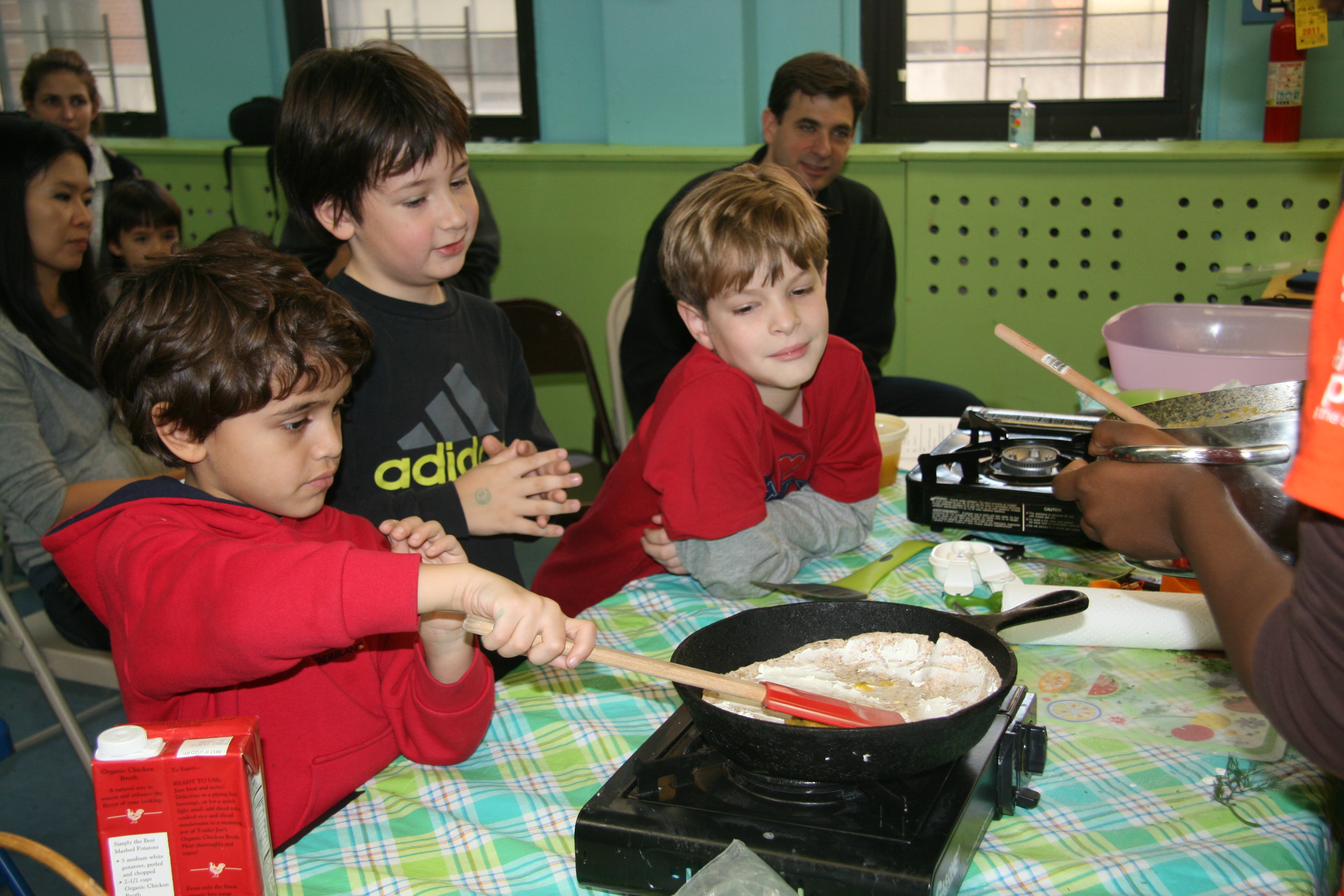Peer Support: A Driver of Behavior Change for Healthy Eating Patterns

This is the fifth article in a new series to illuminate key ‘drivers of behavior change’ around healthful eating. After 20 years of designing, evaluating and retooling curriculum to increase successful behavioral outcomes among all ages, we have identified 10 distinct behavior drivers. We are currently investigating these 10 drivers in a new study in collaboration with Columbia University’s Teachers College, Program in Nutrition. Our goal is to open a new area in the scientific literature that illuminates successful delivery and communication techniques. Over time as other practitioners and researchers add to this body of research, we can achieve consensus about what constitutes effective Teaching Kitchen curriculum.
When a young child experiences stranger anxiety, all they want or need is the comfort of their own familiar caregiver. We humans are hard-wired to search for companionship and support when we face a social situation that could produce anxiety. A child may dislike being called on or singled out in the classroom in front of their peers – it’s lonely standing before everyone, hoping you won’t be laughed at or ridiculed.
These common experiences as we develop and mature teach us to look for peer support when we are navigating new social situations. Adolescents emulate this phenomena quite overtly; indeed there is safety in numbers.
So what does this imply for Teaching Kitchens? It’s been our long experience that for every age group (even though class design will differ greatly), participants need to feel part of a bigger group and a level playing field in order to try something new. Two to four years-olds have already gone through an oral phase where they’ve tasted positively anything and everything in sight. This serves the important survival lesson that not everything should be tasted or eaten. Hence, it stands to reason that young children will shun many new foods when offered them for the first time. They have learned to become discerning. To make it feel ‘safe’ to taste mustard greens or black-eyed peas, other people had better be doing the same thing!
Once they see others, caregivers and siblings, all taking a bite and remaining unharmed, it becomes self-evident that the new food is ‘safe’ to eat. This is all subliminal and mostly unconscious. But it’s an important part of the food acceptance process. Especially in a Teaching Kitchen setting where the whole goal is to broaden the types of healthful ingredients that participants will come to accept and eat readily and voluntarily. When we are surrounded by people who are similar in age and background to ourselves, and those people are taking a bold step in tasting something, and reacting positively— we become curious.
Curiosity and the normalizing factor of our social networks is an important component of the behavior change puzzle to employ in all Teaching Kitchen designs.
To learn more about our evidence-based Teaching Kitchen programs, visit our Teaching Kitchen page or email me at lynn@familycookproductions.com.
Related Articles:
[SERIES] Drivers of Behavior Change for Healthy Eating Patterns:
Home Environment
Collaboration
Celebration
Challenge
[INFOGRAPHIC] 10 Drivers of Behavior Change for Effective Teaching Kitchens

